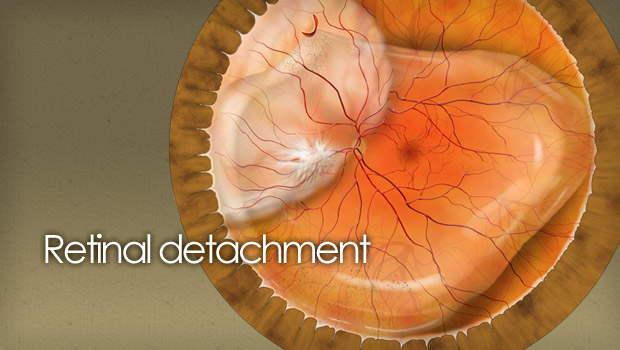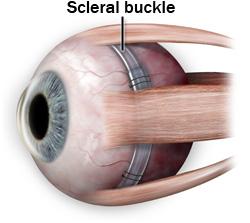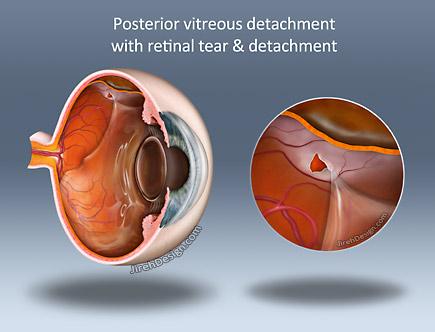Retinal detachment
Retinal Detachment – causes, treatments, news and surgical procedures What is retinal detachment? The retina is the light-sensitive layer of […]


Retinal detachment
Retinal Detachment – causes, treatments, news and surgical procedures What is retinal detachment? The retina is the light-sensitive layer of […]
Retinal Detachment – causes, treatments, news and surgical procedures
What is retinal detachment?
The retina is the light-sensitive layer of tissue that lines the inside of the eye and sends visual messages through the optic nerve to the brain. When the retina detaches, it lifts or pulls from its normal position. If not promptly treated, retinal detachment can cause permanent vision loss and will need surgery. Watch the “How vision works” animation.
In some cases there may be small areas of the retina that are torn. These areas, called retinal tears or retinal breaks, can lead to retinal detachment.
What are the symptoms of retinal detachment?
Symptoms include a sudden or gradual increase in the number of floaters and/or light flashes in the eye or the appearance of a curtain over the field of vision. A retinal detachment is a medical emergency. Anyone experiencing the symptoms of a retinal detachment should see an eye care professional immediately.
What are the different types of retinal detachment?
There are three different types of retinal detachment:
- Rhegmatogenous [reg-ma-TAH-jenous] — A tear or break in the retina causes it to separate from the retinal pigment epithelium (RPE), the pigmented cell layer that nourishes the retina, and fill with fluid. These types of retinal detachments are the most common.
- Tractional — In this type of detachment, scar tissue on the retina’s surface contracts and causes it to separate from the RPE. This type of detachment is less common.
- Exudative — Retinal diseases can cause these types of detachments. Some examples are inflammatory disorders and injury/trauma to the eye. In this type, fluid leaks into the area underneath the retina (subretina).
Who is at risk for retinal detachment?

How do we treat a retinal detachment?
Small holes and tears are treated with laser surgery or a freeze treatment called cryopexy. These procedures are usually performed in the doctor’s office. During laser surgery, tiny burns are made around the hole to “weld” the retina back to into place. Cryopexy is a similar procedure that freezes the area around the hole.

During a vitrectomy, the doctor makes a tiny incision in the sclera (white of the eye). Next, he places a small instrument into the eye to remove the vitreous. He then injects a salt solution into the eye to replace the vitreous.
Early treatment can usually improve the visual acuity of most patients with retinal detachment. Some patients, however, will need more than one procedure to repair the damage.
Other Resources
Watch the “How vision works” animation
The following organization may be able to provide additional information on retinal detachment:
American Academy of Ophthalmology
P.O. Box 7424
San Francisco, CA 94109-7424
(415) 561-8500
http://www.aao.org
Publishes a patient brochure entitled Detached and Torn Retina.
For additional information, you may also wish to contact a local library.
See also…
Some information courtesy of the National Eye Institute







